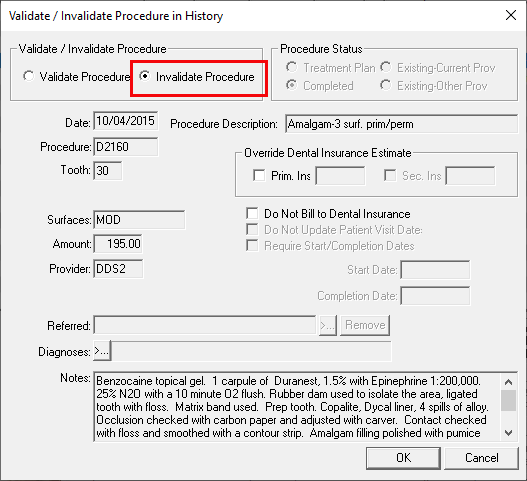How to correct posting errors in a patient’s clinical record even if the procedure is in history.
Updated 11/23/21
Have you had a patient in your chair for his or her 6-month checkup and, while you are perio charting, you notice that the wrong tooth is missing? After further investigation, you realize that the patient was in for an extraction three months ago, but the wrong tooth was set complete. You don’t know what to do, but the Chart needs to be fixed.
This happens more than you think. Sometimes the mistake is caught before month end is run and the procedures are locked up in history so it can be fixed with just a change of the tooth number. But what do you do when the procedure has been posted, sent to the insurance company, paid, and put in history? Do you leave it? No, that is not the right answer. You must correct it and, if the patient has insurance, you should correct it with the insurance carrier as well.
The correct way to fix this situation is to invalidate the procedure in history, post the correct procedure and tooth number, and then adjust the Ledger as necessary. There are two steps here: invalidating and the adjustment.
Invalidating the Procedure
It does not change the Ledger. You can invalidate the procedure from the Patient Chart or the Ledger. When you invalidate a procedure, it only takes the procedure off the Chart.
From the Ledger, double click on the procedure and click on the Invalidate Procedure in the upper left corner of the edit procedure window.

From the Patient Chart, you can highlight the procedure, right click and select Invalidate, or highlight the procedure and click on the Invalidate icon on the toolbar.
Posting the Adjustment
After you have invalidated the procedure, then you can repost it on the Ledger and make an adjustment to correct the patient balance.
You will also need to fix the history with the patient’s insurance company…but this can be challenging. More than likely, you will need to send in clinical notes to prove the mistake and even send in X-rays.
In the end, having an accurate clinical record for your patient is the recommended option. Your patients’ clinical histories will follow them when they move or change insurance companies so it is best to keep their records as accurate as possible.
Learn More
For more ideas about managing procedures in the clinical record, read What You Should Do with Dormant & Duplicate Treatment.
To learn more about correcting posting errors, read Invalidating Procedures in History in Dentrix Help.
By Dayna Johnson, Certified Dentrix Trainer
Dayna loves her work. She has over 25 years of experience in the dental industry, and she’s passionate about building efficient, consistent, and secure practice management systems. Dayna knows that your entire day revolves around your practice management software—the better you learn to use it, the more productive and stress-free your office will be. In 2016, Dayna founded Novonee ™, The Premier Dentrix Community, to help cultivate Dentrix super-users all over the country. Learn more from Dayna at www.novonee.com and contact Dayna at [email protected].





